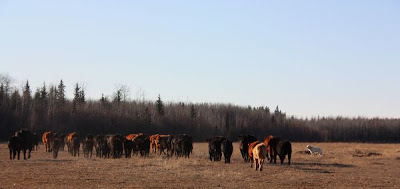That white orb is not a sign of paranormal activity,
it is just the weak sun trying to break through the clouds to brighten my day.
I am fully into the winter feeding routine.
Each day we unroll hay bales over the pasture to give the ewes ample space to be able to eat.
By unrolling the bales like this,
rather than feeding them out of bales feeder's,
is to help spread the manure and wastage from the bales over the land.
Next year, we want to rejuvenate this pasture and by using it as a winter feeding place now, we can bring some needed nutrients back to the soil in this way with very little effort.
The amount of wastage we have is actually really low.
If we do not overfeed the sheep, they will stand and eat the hay rather than use it as a warm bed. We also unroll straw for the ewes to be able to bed down in.
If we do not overfeed the sheep, they will stand and eat the hay rather than use it as a warm bed. We also unroll straw for the ewes to be able to bed down in.
Every winter we have a family of Prairie Chickens (grouse) living in our yard.
They wonder around the place as though they are free range domestic chickens...
The cats and dogs treat them just like they would our own chickens.
Our own chickens are now wintering in Arizona...
(a warm, insulated chicken coop!)


















